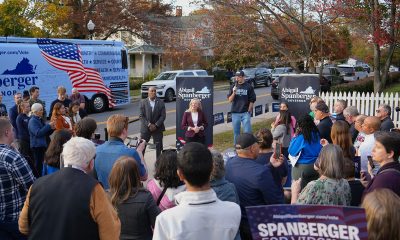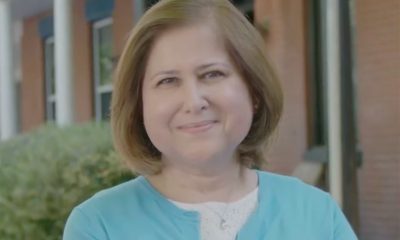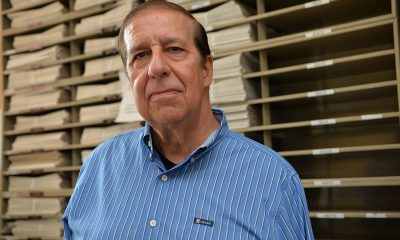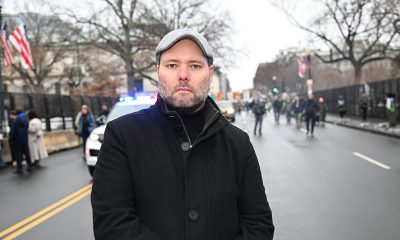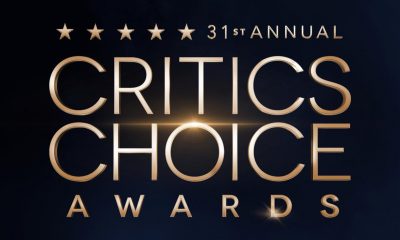Local
Former activists on trial in Wone case
Unsolved murder has elements of gay mystery novel
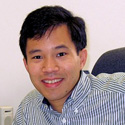
Three once politically active gay men whose polygamist relationship and proclivity for S&M sex has been exposed by prosecutors following a D.C. murder investigation are scheduled to go on trial May 10 in a case that mimics a mystery novel.
Gay rights attorney Joseph Price, dairy industry official Victor Zaborsky and former Virginia gay rights group staffer turned massage therapist Dylan Ward have been charged with evidence tampering, obstruction of justice and conspiracy in connection with the August 2006 murder of Asian American attorney Robert Wone.
Wone, 32, was found stabbed to death in a second floor guest room in the Dupont Circle area townhouse where the three gay men lived at the time. Authorities have yet to charge anyone with the murder itself, but police and prosecutors have said they believe Price, Zaborsky and Ward most likely know the identity of the killer.
The men have pleaded not guilty, saying an unidentified intruder who entered their house through a rear door killed Wone while the three slept.
Wone was a longtime friend of Price since the two were students at the College of William & Mary in Virginia. He was spending the night at the gay men’s house on Swann Street, N.W. after working late at his nearby office, according to his wife, Kathy Wone, and other family members who say he was straight.
The trial is set to begin after more than a year of haggling between defense and government attorneys over the admissibility of a mountain of evidence gathered by D.C. police and prosecutors. A team of nearly one dozen defense lawyers is set to face off against a smaller team of prosecutors headed by Assistant U.S. Attorney Glenn Kirschner, who is considered one of the city’s most effective prosecutors.
“Given the sophistication of the defendants’ cover-up of the murder of Robert Wone, the evidence obtained to date does not yet establish beyond a reasonable doubt who actually killed Robert Wone,” Kirschner wrote in a government motion filed in February.
“Although the government investigation into the murder continues,” he wrote, “there is ample evidence demonstrating the killer is someone known to the defendants, and not, as the defendants told the police, an unknown, unseen phantom intruder.”
Much of the government’s evidence against the three defendants surfaced in October 2008, when prosecutors released a 13-page affidavit in support of an arrest warrant for Ward, who was the first of the three men to be charged in the case.
The affidavit describes in detail some of the findings of crime scene investigators and an autopsy conducted on Wone. It says that someone in the house cleaned the crime scene by wiping away spattered blood. The affidavit also says chemical and fiber tests showed someone used a towel to wipe some of Wone’s blood onto a knife taken from the defendants’ kitchen. The men told police they found the bloody knife on a nightstand in the room where Wone was sleeping, saying it was the weapon an intruder used to stab Wone three times in the chest and abdomen.
Prosecutors, however, said later that a knife missing from a cutlery set found in Ward’s bedroom appeared to be the actual murder weapon based on the shape and depth of the stab wounds. Prosecutors obtained a duplicate of the missing knife from the manufacturer for the purpose of comparing it to the wounds on Wone’s body, court papers show.
Prosecutors initially said they would argue at trial that Wone had been immobilized by a paralytic drug, sexual assaulted and possibly tortured with needle punctures found in various places on his body before being stabbed. They pointed to autopsy findings showing surgical-like stab wounds on the body, with no signs that Wone moved or flinched when he was attacked. The lack of any signs of defensive wounds or slightly jagged stab wounds — which are found in virtually all stabbings — indicated the victim was immobilized, Kirchner has argued.
Kirschner has since said the government has been unable to definitively show through chemical tests that Wone was immobilized with a drug, but he indicated he might introduce evidence found in Ward’s bedroom of a large collection of S&M sex devices, including body restraints, face masks, and an object used to administer an electric shock to different parts of the body.
Defense attorneys, led by seasoned trial lawyers Bernard Grimm, Thomas Connolly and Robert Spagnoletti, the gay former D.C. attorney general and a former U.S. prosecutor, have waged a fierce pre-trial fight to disqualify key pieces of government evidence. Superior Court Judge Lynn Leibovitz was expected to rule on evidence related matters as a final pre-trial hearing set for Wednesday, after Blade deadline.
While details of the murder scene and the private, sexual proclivities of the defendants have emerged over the past two years, gay activists have watched cautiously as fellow activist Price prepares for trial.
Price, an attorney in private practice, had served as general counsel to Equality Virginia, a statewide LGBT rights group based in Richmond. Ward, who worked as a staff member of the group, left the organizations a few months before the Wone murder. Price withdrew from the group shortly after the Wone murder drew extensive media coverage.
“You have gay activists on trial that had a polygamist gay family,” said David Greer, a D.C. gay man and one of four editors of whomurderedrobertwone.com. “Having a conjugal relationship with more than one partner is not pushing the white-picket-fence image that gay organizations like to promote.
“To have them on trial in an unseemly situation that has surfaced here is difficult for the gay community. But it also shows that our community has matured” by not automatically rallying behind activists charged with a crime, Greer said. “It shows that our community supports justice.”
Virginia
Gay Va. State Sen. Ebbin resigns for role in Spanberger administration
Veteran lawmaker will step down in February
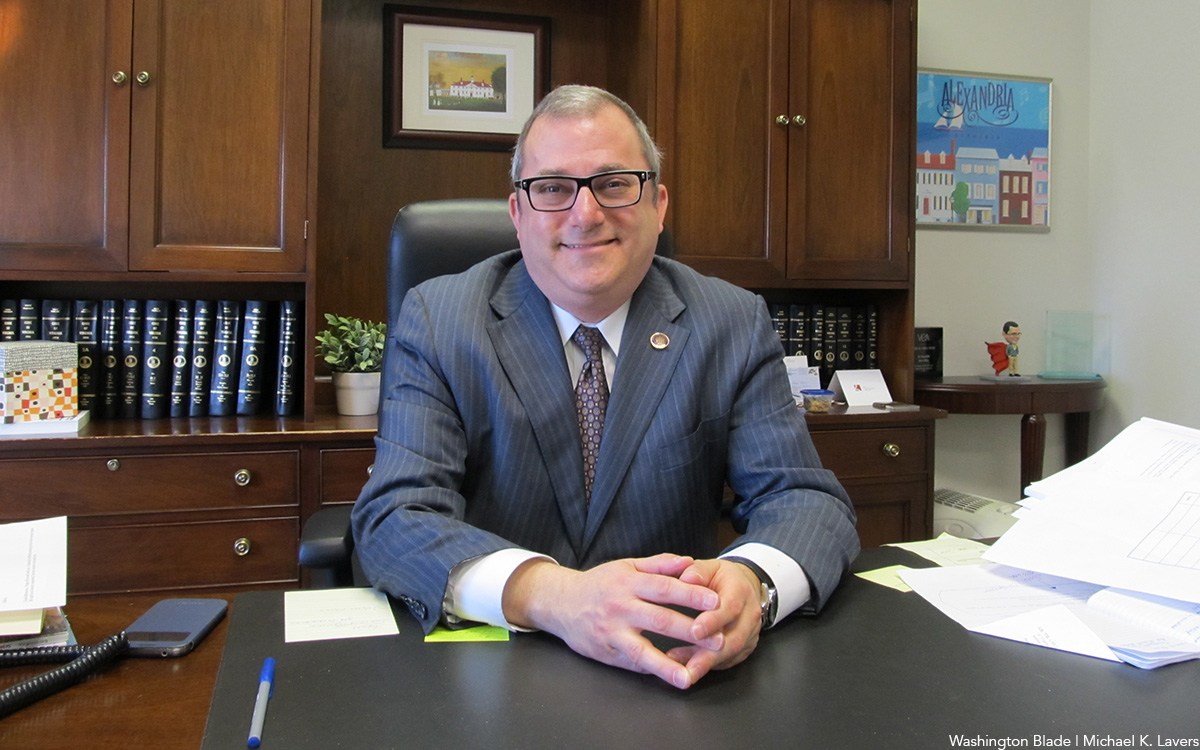
Alexandria Democrat Adam Ebbin, who has served as an openly gay member of the Virginia Legislature since 2004, announced on Jan. 7 that he is resigning from his seat in the State Senate to take a job in the administration of Gov.-Elect Abigail Spanberger.
Since 2012, Ebbin has been a member of the Virginia Senate for the 39th District representing parts of Alexandria, Arlington, and Fairfax counties. He served in the Virginia House of Delegates representing Alexandria from 2004 to 2012, becoming the state’s first out gay lawmaker.
His announcement says he submitted his resignation from his Senate position effective Feb. 18 to join the Spanberger administration as a senior adviser at the Virginia Cannabis Control Authority.
“I’m grateful to have the benefit of Senator Ebbin’s policy expertise continuing to serve the people of Virginia, and I look forward to working with him to prioritize public safety and public health,” Spanberger said in Ebbin’s announcement statement.
She was referring to the lead role Ebbin has played in the Virginia Legislature’s approval in 2020 of legislation decriminalizing marijuana and the subsequent approval in 2021of a bill legalizing recreational use and possession of marijuana for adults 21 years of age and older. But the Virginia Legislature has yet to pass legislation facilitating the retail sale of marijuana for recreational use and limits sales to purchases at licensed medical marijuana dispensaries.
“I share Governor-elect Spanberger’s goal that adults 21 and over who choose to use cannabis, and those who use it for medical treatment, have access to a well-tested, accurately labeled product, free from contamination,” Ebbin said in his statement. “2026 is the year we will move cannabis sales off the street corner and behind the age-verified counter,” he said.
Maryland
Steny Hoyer, the longest-serving House Democrat, to retire from Congress
Md. congressman served for years in party leadership
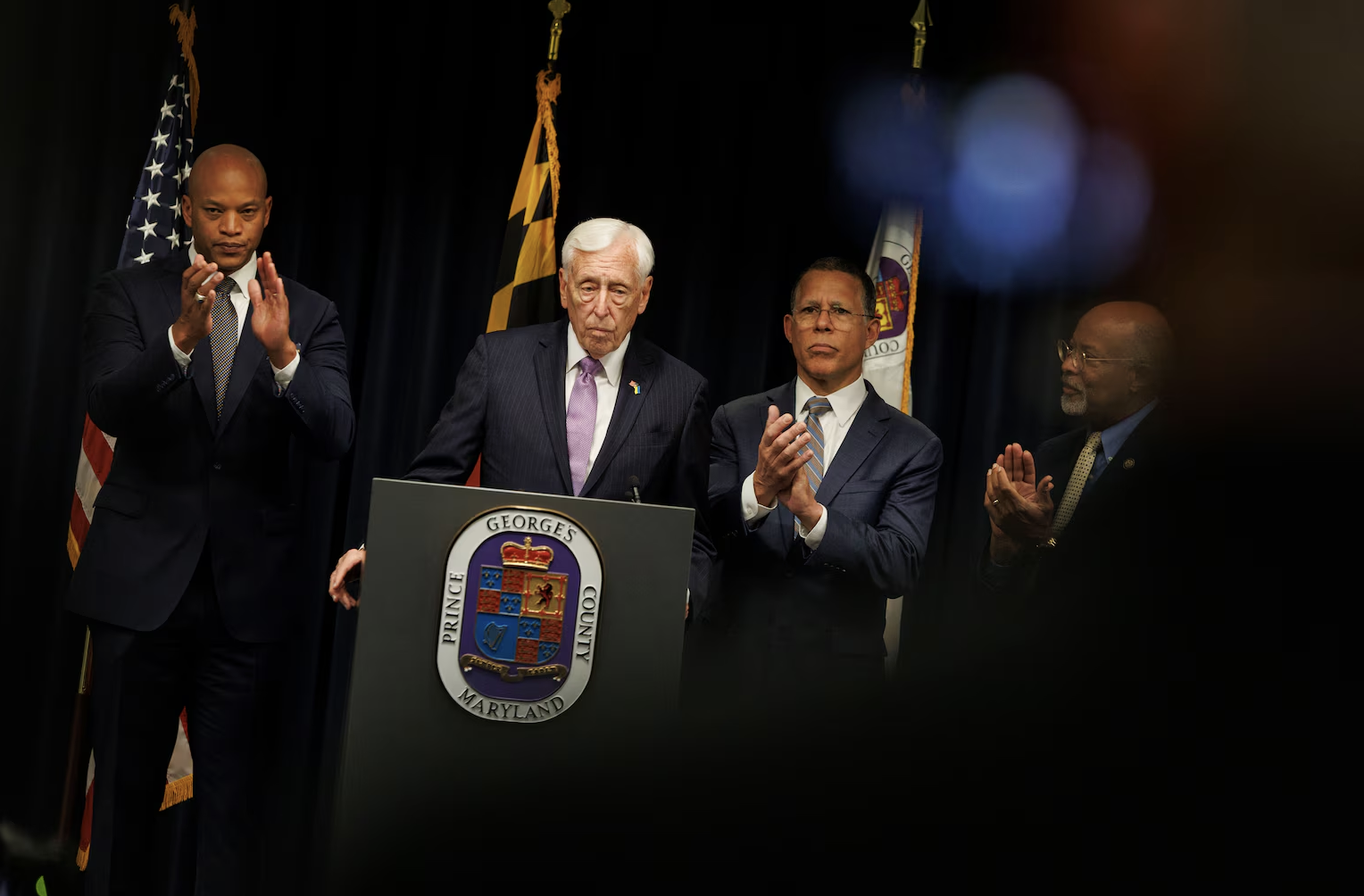
By ASSOCIATED PRESS and LISA MASCARO | Rep. Steny Hoyer of Maryland, the longest-serving Democrat in Congress and once a rival to become House speaker, will announce Thursday he is set to retire at the end of his term.
Hoyer, who served for years in party leadership and helped steer Democrats through some of their most significant legislative victories, is set to deliver a House floor speech about his decision, according to a person familiar with the situation and granted anonymity to discuss it.
“Tune in,” Hoyer said on social media. He confirmed his retirement plans in an interview with the Washington Post.
The rest of this article can be found on the Baltimore Banner’s website.
District of Columbia
Kennedy Center renaming triggers backlash
Artists who cancel shows threatened; calls for funding boycott grow

Efforts to rename the Kennedy Center to add President Trump’s name to the D.C. arts institution continue to spark backlash.
A new petition from Qommittee , a national network of drag artists and allies led by survivors of hate crimes, calls on Kennedy Center donors to suspend funding to the center until “artistic independence is restored, and to redirect support to banned or censored artists.”
“While Trump won’t back down, the donors who contribute nearly $100 million annually to the Kennedy Center can afford to take a stand,” the petition reads. “Money talks. When donors fund censorship, they don’t just harm one institution – they tell marginalized communities their stories don’t deserve to be told.”
The petition can be found here.
Meanwhile, a decision by several prominent musicians and jazz performers to cancel their shows at the recently renamed Trump-Kennedy Center in D.C. planned for Christmas Eve and New Year’s Eve has drawn the ire of the Center’s president, Richard Grenell.
Grenell, a gay supporter of President Donald Trump who served as U.S. ambassador to Germany during Trump’s first term as president, was named Kennedy Center president last year by its board of directors that had been appointed by Trump.
Last month the board voted to change the official name of the center from the John F. Kennedy Memorial Center For The Performing Arts to the Donald J. Trump And The John F. Kennedy Memorial Center For The Performing Arts. The revised name has been installed on the outside wall of the center’s building but is not official because any name change would require congressional action.
According to a report by the New York Times, Grenell informed jazz musician Chuck Redd, who cancelled a 2025 Christmas Eve concert that he has hosted at the Kennedy Center for nearly 20 years in response to the name change, that Grenell planned to arrange for the center to file a lawsuit against him for the cancellation.
“Your decision to withdraw at the last moment — explicitly in response to the Center’s recent renaming, which honors President Trump’s extraordinary efforts to save this national treasure — is classic intolerance and very costly to a non-profit arts institution,” the Times quoted Grenell as saying in a letter to Redd.
“This is your official notice that we will seek $1 million in damages from you for this political stunt,” the Times quoted Grenell’s letter as saying.
A spokesperson for the Trump-Kennedy Center did not immediately respond to an inquiry from the Washington Blade asking if the center still planned to file that lawsuit and whether it planned to file suits against some of the other musicians who recently cancelled their performances following the name change.
In a follow-up story published on Dec. 29, the New York Times reported that a prominent jazz ensemble and a New York dance company had canceled performances scheduled to take place on New Year’s Eve at the Kennedy Center.
The Times reported the jazz ensemble called The Cookers did not give a reason for the cancellation in a statement it released, but its drummer, Billy Hart, told the Times the center’s name change “evidently” played a role in the decision to cancel the performance.
Grenell released a statement on Dec. 29 calling these and other performers who cancelled their shows “far left political activists” who he said had been booked by the Kennedy Center’s previous leadership.
“Boycotting the arts to show you support the arts is a form of derangement syndrome,” the Times quoted him as saying in his statement.
-

 Sponsored4 days ago
Sponsored4 days agoSafer Ways to Pay for Online Performances and Queer Events
-

 District of Columbia3 days ago
District of Columbia3 days agoTwo pioneering gay journalists to speak at Thursday event
-

 Colombia3 days ago
Colombia3 days agoBlade travels to Colombia after U.S. forces seize Maduro in Venezuela
-

 a&e features3 days ago
a&e features3 days agoQueer highlights of the 2026 Critics Choice Awards: Aunt Gladys, that ‘Heated Rivalry’ shoutout and more



